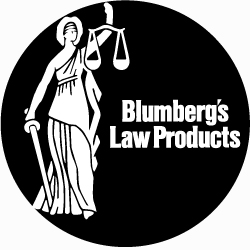
Business Cards, now so ubiquitous, date back to the 16th century, when the footmen of royalty and aristocrats presented cards to the servant of the house to announce their arrival. By the next century, “visiting cards” were widely used in Europe. About the size of playing cards, the cards were also used to jot down messages. When tradespeople started to use cards in the early 17th century, London streets had no formal numbering system. So, directions and maps were printed on the card as well as advertising. With the rise of commerce and a new class of entrepreneurs who needed to exchange information, “trade cards” merged with “visiting cards” to create the business cards we know today
Despite the growth of social media, business cards are, if anything, gaining in popularity. The advantages are many. They are inexpensive, extremely portable, small enough to tuck in a shirt pocket or wallet and are an exceptionally handy and efficient way to give out contact information while conveying a positive message about your firm. Nowadays, business meetings often begin with the timesaving ritual of exchanging cards—cards that become valuable memory aids after the meeting is over. Meanwhile, a chance social introduction can become a professional opportunity as cards pass between hands.
Below are some suggestions about making the best use of business cards.
Business cards pack a double punch – they convey your contact information and an opportunity to market yourself. Despite the growth of social media, business cards remain resilient because they are inexpensive and effective. Read on to learn how to create an attractive card to promote your firm.
Every professional in your firm should consider using a business card – lawyers, paralegals, and secretaries. Business cards are useful for networking occasions like luncheons, meetings, and seminars. Give them out wherever you meet someone new – waiting lines, locker rooms, etc. After you’ve been talking with someone for a while, ask if they have a business card and offer your card to them. Ask the recipient about themselves using ice breaker questions about careers, family, and interests. Mention how you can help them achieve their goals.
Information on your card can include your name, firm, address, email, phone, cell and fax numbers, e-mail, website address, LinkedIn URL, Twitter handle, etc. Leave the reverse side blank for recipients to take notes or add information like a list of your accomplishments, pro bono work, and practice areas. The reverse side of the card can also provide legal tips like what to do if involved in an accident or questioned by the police.
Consider adding a logo like a stylized version of your firm’s initials or an image of the scales of justice. Also think about including a tagline to convey a message like “your advisor and advocate”, “let us help you” or “we advocate for you“. Your logo and catchphrase can be used on business cards, brochures and stationery to brand your firm.
Although a photograph enables prospects to put a face to your name, photos may be inappropriate if you want to emphasize your firm. A photo might be a good idea if send to a recipient who won’t meet you till a later date like a court appearance. If you add a photograph, carefully select one that gives an impression of professionalism and trustworthiness.
Add a QR Code to your business card to enable smartphone users quick access to additional information about you and your firm. QRC’s allow recipients to display on their smartphones like your biographical data and firm profile.
Use a display holder to keep business cards in your firm’s reception area. Keep a supply in your wallet to hand out when meeting prospective clients. Include them with materials given to new clients. Invite referral sources to give your card to others who might need your service.
Use high quality paper and ink so that the card feels substantial and pleasing to touch. Consider options like embossing, colored paper, foil stamping, raised ink, and UV coating. Don’t crowd the card with too much information that makes it difficult to read. Stick with the standard 2″ x 3.5″ card since odd-sizes and shapes are difficult to save and might convey a non-professional image. Consider using 12-point font for the firm name, 9-point for your name, and 7 or 8 for other text. Leave white space so that prospects will have a place to take notes. A designer can help you create a card that leaves a good impression.
Ask for a card in return whenever you give out your business card. Organize the cards you collect in a Rolodex or scan them into a digital contact list. Follow up with a note card, e-mail, or contact via LinkedIn. Consider sending an article with information about a legal topic that would be of interest to your prospect. Send an article that you have written or use one of the client pamphlets available from Blumberg to inform, educate, and impress.
To order Call 800 221-2972 x1692 or click here . Design services are available and features can include multi-colors, Quick Response Codes, blind embossing, foil stamping, close registration, bleeds and solids.
Click here to view other marketing products and services to make a lasting, positive impression.
